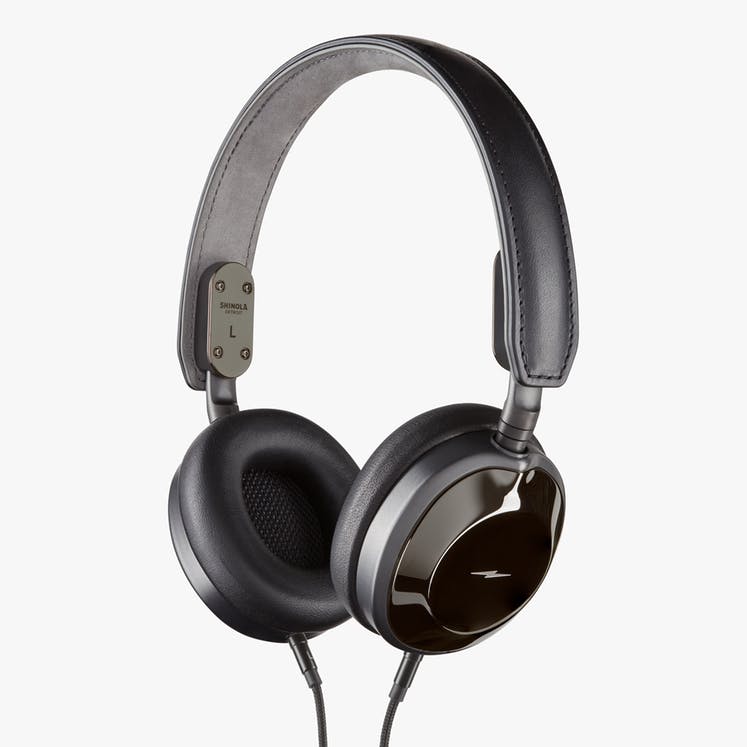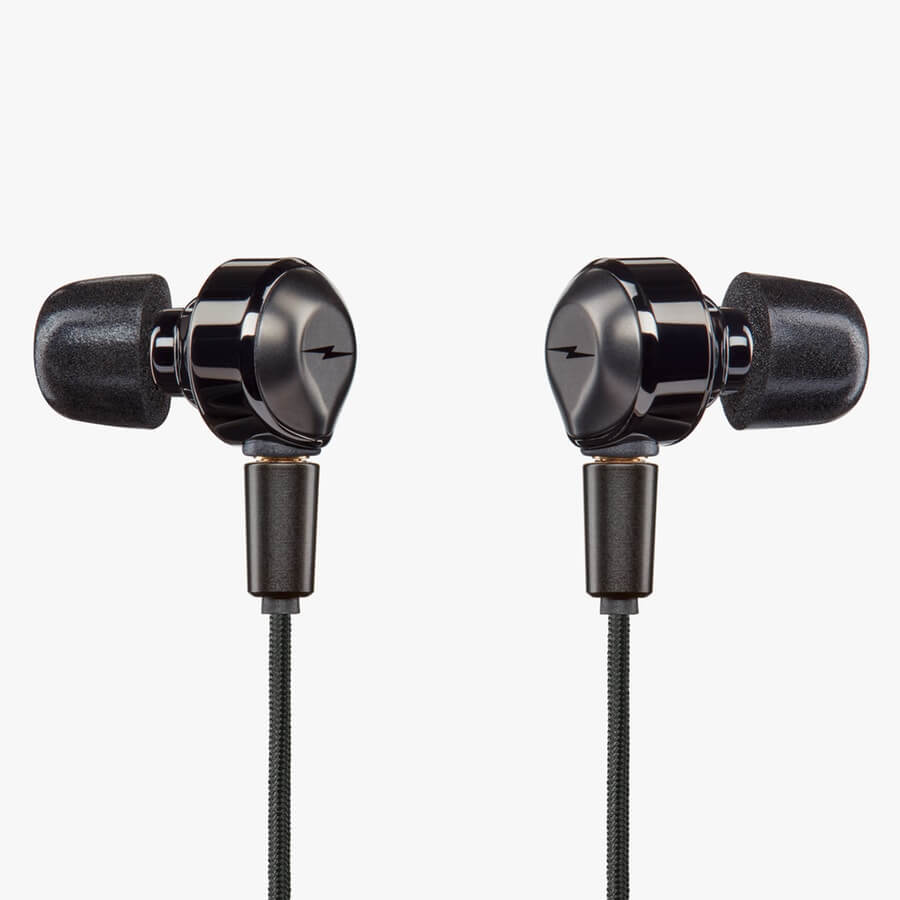If you want to save some time, here’s the short version of our review: we simply cannot recommend you purchase either on-ear headphones or in-ear monitors from Shinola’s Canfield line. If you’re interested in finding out why, read on…
Design and Style
Style-wise, both the Canfield headphones and earbuds look marvelous and luxurious. So, kudos to the design team at Shinola on that front. For those of you unaware, Shinola is probably best-known as a watchmaker based out of Detroit. So, it’s no surprise that those industrial design skills transferred over so well to the looks of the Canfield line.
That said, they chose to employ a magnetically-detachable ear cushion on the headphones, which in and of itself isn’t the oddest design choice (although it’s not very necessary), but the issue lies in the fact that the cushions are easy to accidentally knock off the headphones. Instantly upon opening our package, I set the on-ear headphones down on our office’s mixing console, and the cushions dislodged and rolled under our dusty control desk. Not a great start. The cushions themselves (when they do stay on), are plush, covered in lambskin and fairly comfortable even after long periods of use. Same for the headband.

Audio Quality
Now, here’s where things get murky. And unfortunately, we mean that quite literally. When we received these a few weeks back, they were priced over $600 retail, so we went in with high expectations. Sadly, the Canfield headphones and in-ears both fell far short of excellence in the audio quality department.
At first, we thought perhaps there was a fault in our source materials. We used our in-house stereo, which houses a recently-serviced Harman/Kardon twin-powered vintage receiver, Cambridge Audio CD player and Nakamichi cassette deck. The Canfields sounded congested, as if each band of audio was struggling for clarity. So, we unplugged, regrouped, and tried our source audio through a variety of headphones we had in the office, namely the Audio-Technica ATH-M50x’s, the Yamaha HPH-MT8’s and our stock Grado SR-225’s.
The problem was definitely not the stereo set-up or the source audio. Each of the other pairs of headphones performed admirably, and each comes in around $200. At the time of the test, you could have literally purchased all three of these headphones for less than the cost of the Canfields.
We also tried running some scratch demo recordings from our DAW through the Canfields using a Universal Audio Arrow interface. Results were similar. The Canfields just don’t sound that great. I could list all the specs and go into a deeper technical discussion, but why? All the bullet-point specs in the world don’t add up to much if the product just doesn’t sound great.
And they certainly don’t outperform headphones costing roughly 1/3 the price. We were disheartened; here’s an American company that we wanted to root for, but so far we have a flashy design, and less-than-stellar audio.

Value
Like we said, when we received our test pairs a few weeks back, the on-ear headphones were retailing for over $600. Shinola has since reduced that price to $350. The in-ear monitors, at the time of this writing, are still in the $500 range. And similarly, they just don’t match up, sonically speaking, to in-ears we’ve recently tested from Mackie (the MP-240’s at a ridiculously low $169) or our custom-made Ultimate Ears UE 4 Pro’s, which come in at just $399.
For the current price, you’d at least expect a ¼” adapter, or noise-cancelling capabilities, or something extra for your cash. But alas, there are no other features to be found.
Final Verdict
We really tried hard to like these, but our readers deserve an honest evaluation. And at the end of the day, we simply cannot recommend you purchase either the on-ear or in-ear versions of the Shinola Canfield line-up. The style’s kind of cool, but you’ve got to contend with wonky ear cushions that decide on their own when they want to come off, congested audio that doesn’t match the clarity of headphones priced hundreds less, and the final sticking point: Detroit.
No, we don’t have anything against the city of Detroit. But man, you’ll find that word plastered all over Shinola’s marketing materials, packaging, and the products themselves, to the point where it wouldn’t be unfair to say some consumers may get the idea that the headphones are Made in the USA. Now, while Shinola’s certainly not doing anything deceptive or malicious, it could still rub people the wrong way if they’re making assumptions about a product without doing their research first.
From our understanding, the headphones are designed and assembled in Detroit, but use mostly parts imported from overseas. If Made in America is important to you, check out Grado Labs, who still makes many of their products by hand in Brooklyn.
PROS:
Style.
CONS:
They don’t sound great; they’re overpriced; the removable ear cushions come off way too easily and are likely to get lost; despite marketing efforts that might have you believe otherwise, they are not made entirely in the United States.
PRICE:
$650 currently reduced to $350 for the on-ear models
$495 for the in-ear versions.
